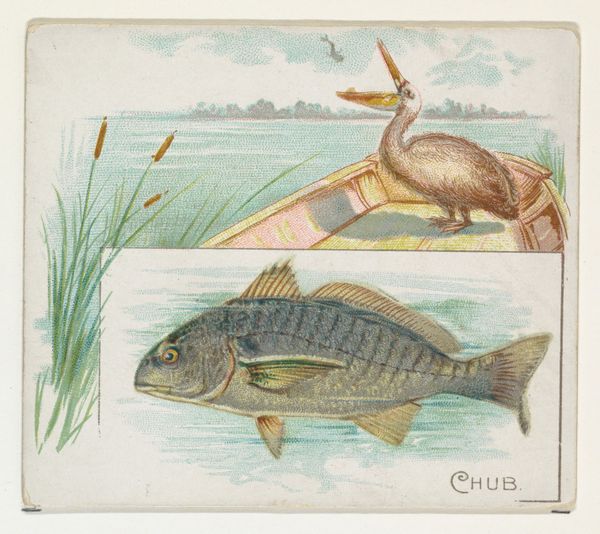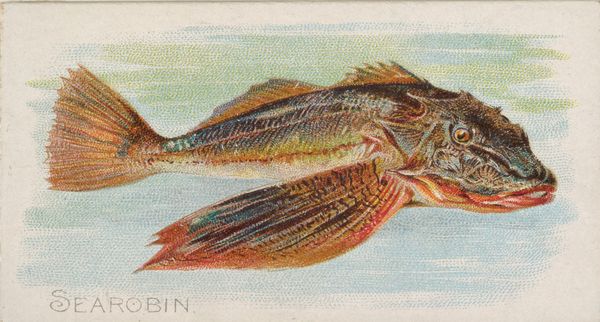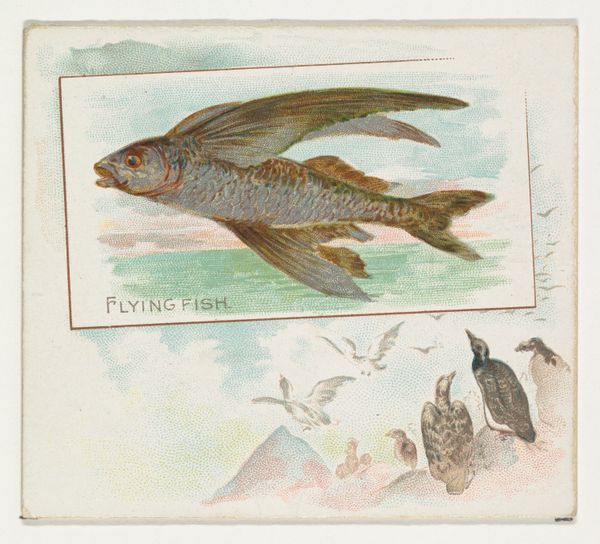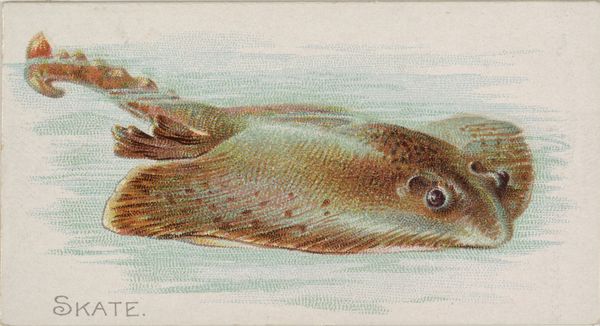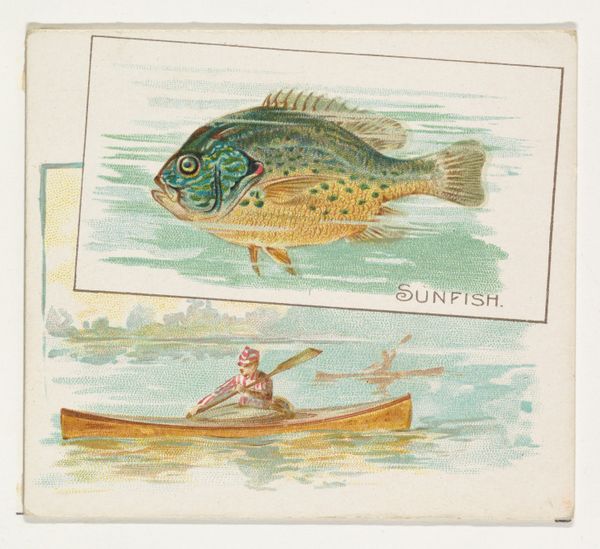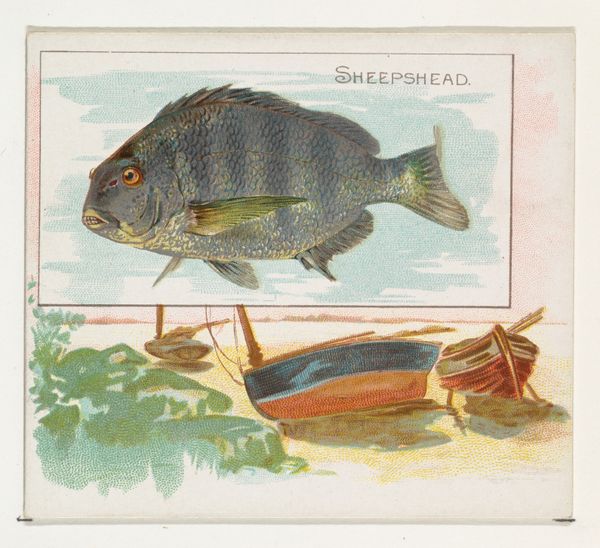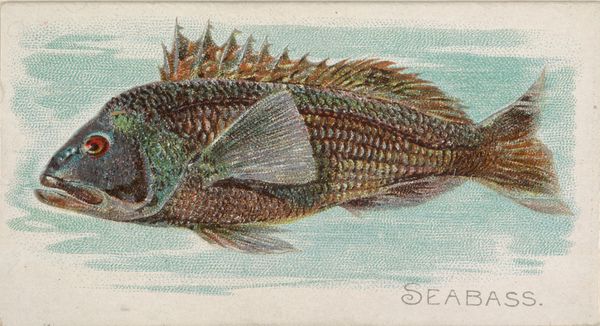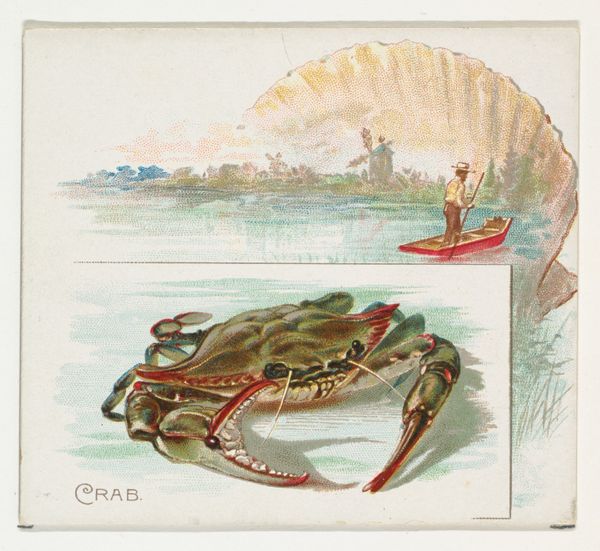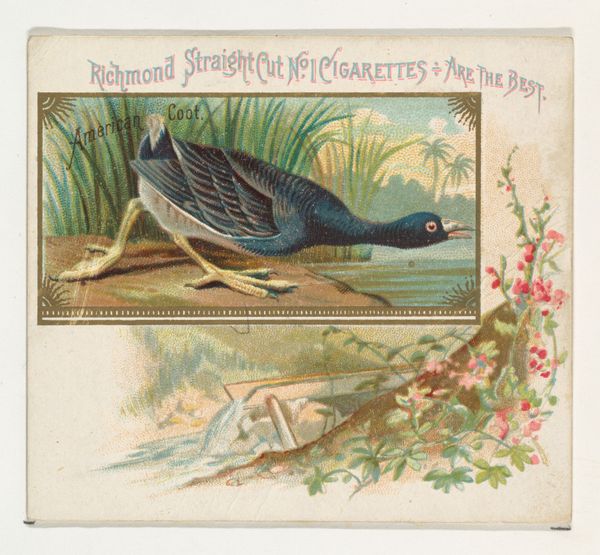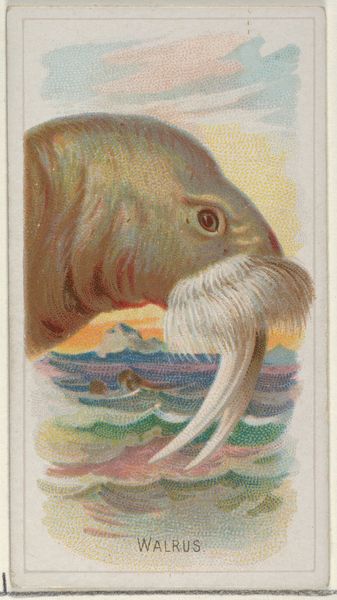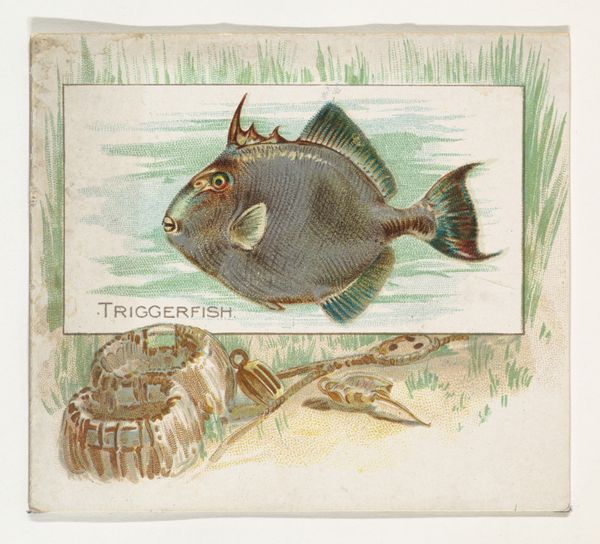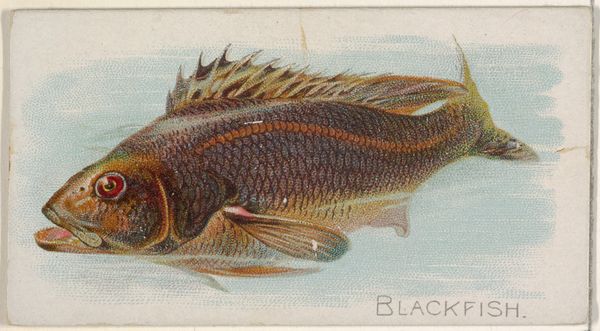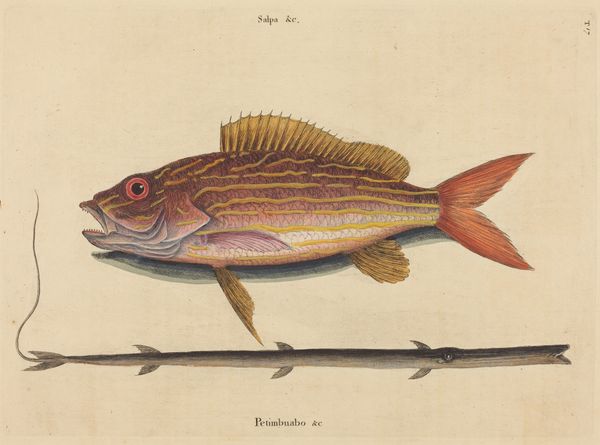
Searobin, from Fish from American Waters series (N39) for Allen & Ginter Cigarettes 1889
0:00
0:00
Dimensions: Sheet: 2 7/8 x 3 1/4 in. (7.3 x 8.3 cm)
Copyright: Public Domain
Curator: This chromolithograph titled "Searobin" is part of the "Fish from American Waters" series, created around 1889 for Allen & Ginter Cigarettes. It depicts two distinct vignettes: a pelican perched precariously on an overturned boat and, directly beneath it, the eponymous searobin fish. Editor: It's… quaint, isn't it? A bit unsettling too, with that awkward juxtaposition. The searobin is rendered with a kind of scientific precision while the pelican scene seems almost cartoonish in comparison. I find that inherent conflict captivating, although a bit perplexing from the first encounter. Curator: Well, consider the purpose of its creation. These cards, mass-produced as premiums, existed within a network of distribution heavily influenced by the rise of consumer culture and, of course, the tobacco industry. It's an exercise in both capitalist enterprise and documentation, blurring the lines of artistic mediums. Editor: Right, the materiality. Cheap cardstock, likely printed with inexpensive inks. How do the limitations of those available resources dictate the image? Also the distribution—consider the context of this card being handled, traded, and eventually discarded by the consuming public, primarily the emerging working class, solidifying social habits around consumption and leisure. It certainly highlights the consumption habits and culture of the period. Curator: Exactly! The flattening of perspective and the bold outlines seem reminiscent of Ukiyo-e prints. Allen & Ginter strategically co-opted this established aesthetic to create a perceived association of quality. This form also serves as an educational opportunity, inserting an almost scientific lesson amid a marketing technique. How were these modes co-opted and perverted? Editor: An interesting and valid point. The Searobin may signify our ever-increasing drive for commodity and also a deep and underlying environmental perspective in an ever growing modern culture. Curator: Indeed. These collectible cards served to instruct consumers about nature, about collecting, about value, even if these modes were simply side effects from pure uninhibited capitalism. It's not the "high art" we see in museums. Editor: No, and perhaps that's where its true value resides: its honesty regarding material conditions. What more does this little cardboard square whisper about society in a period of radical transformation? A window into history indeed!
Comments
No comments
Be the first to comment and join the conversation on the ultimate creative platform.
